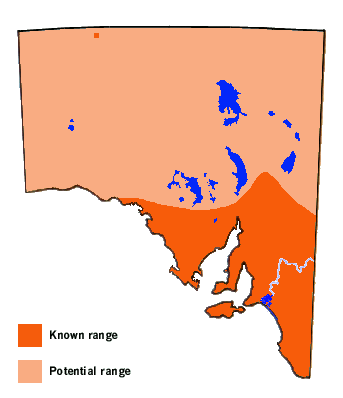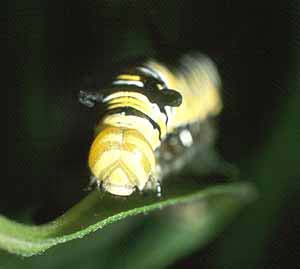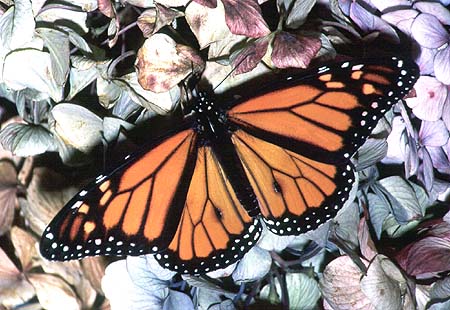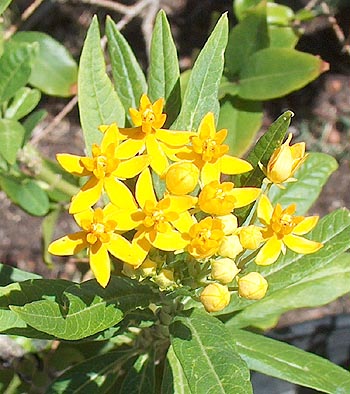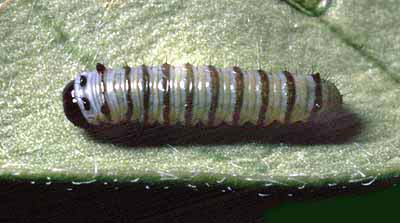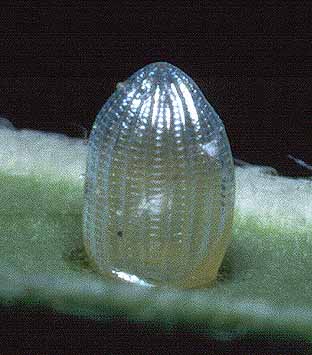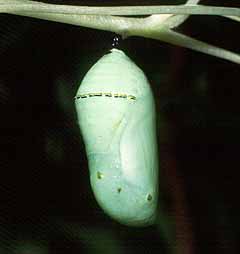Monarch or Wanderer
Danaus plexippus plexippus (Linnaeus)
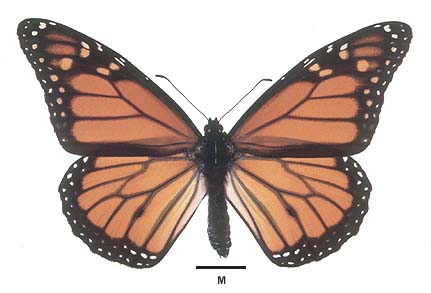
Interesting Aspects
This butterfly is indigenous to the Americas, but has a prodigious migratory power that takes it across oceans to many other parts of the world. Its larvae feed on milkweeds and if they are present in an area where the butterfly makes landfall then it may remain to colonise. The butterfly was first reported from the Hawaiin Islands in about 1840 after the introduction of milkweed plants. (It is not known if the butterfly found its own way to Hawaii or was intoduced, either accidentally or purposely). Using those islands as a staging post, the butterfly extended its range into the Southwest Pacific Region. The butterfly was first reported in Australia in 1856 from Sydney in New South Wales. There are also reports of it being in New Zealand by 1840 and local Maoris had indicated the butterfly was known to them before Europeans arrived.
There was a sudden distribution explosion of the butterfly in Australia during the mid 1870's, undoubtedly due to the rampant infestation of an introduced milkweed hostplant for the butterfly, the South African Broad-leaved cotton-bush (Gomphocarpus cancellatus) that was proliferating into areas that had been cleared for agriculture. The butterfly was noted in northeast Australia in 1870-71, perhaps the result of a Pacific Ocean migration, and again in Melbourne in 1872, but by March 1873 was suddenly seen in large numbers around Melbourne. A few butterflies were then subsequently documented for the first time in South Australia in 1874, and by 1875 the butterflies were being noted in many places in South Australia, including Adelaide. By 1878 the butterfly was quite common around Adelaide, and even at Blinman in the North Flinders Ranges the butterflies were very common during the winter of 1878. During the same year the butterfly was documented for the first time in Tasmania. It was first documented in Western Australia from near Perth in 1898, but did not become common there until the late 1960's. An early South Australian naturalist, Charles Wilson documented the earliest appearance of the butterfly in South Australia (in The Garden and The Field, 1878), when the butterfly was then known as Danais archippus.
Both sexes of the butterfly are similar, but males can be distinguished by the presence of a single, small raised black sex pouch in the lower-centre of each hindwing. The males also have a pair of grey "hairpencils" enclosed near the tip of their abdomens, which they can protrude and expand into a feather-like mop and dispense a characteristic scented pheromone which is required for successful courtship. The butterfly is a strong migrant and powerful flyer, capable of spanning oceans and continents. It conserves flight energy on these long trips by gliding on the wind currents where possible, like the albatross' occurring in the Southern Ocean that can circumnavigate the world non-stop with hardly a wing beat. Butterflies have been recorded flying 130 km a day during migrations in North America, during which they frequently fly at heights of 100 m or more. There is a record of a butterfly tagged and released in New York making the 3,800 km trip to Mexico in 5 weeks! Major migratory flights have not been observed in South Australia, although small local flights are occasionally witnessed. The presence of a large gathering of the butterflies at Blinman (during 1878) may have been the result of a migration from southern areas. In temperate areas it usually has a slow graceful gliding flight, but if disturbed can make off with great speed. The slow flight is typical for poisonous species of butterflies, which gives predatory birds sufficient time for recognition. The bright brownish-orange colour of the butterfly is also a readily visible colour. However, in the hot tropics the flight is often more active, particularly when the butterfly is still in a migratory mode.
Males tend to congregate around groves of the hostplant, and early in the season they stake out their particular portion of the grove, patrolling and waiting for newly emerged females to mate with. They will aggressively chase off any other males that venture into their territory. They may also wait around a good flowering plant or a sunny spot not too far away from the hostplants. During the cool evening of a hot day, they have also been seen to career around sunny glade areas seemingly enjoying themselves and their use of flight. The females are strong vagrants and actively seek out the larval hostplants, and most major centres of human habitation in South Australia with milkweed growing have at some time been populated by a few Wanderers. Later in the season both sexes seem to just mill about, happy to do just nothing except feed and stay cool in the shade. In some years the Wanderer occurs with the Lesser Wanderer in southern settled areas, and the larvae of both species can sometimes be found together on the one hostplant. It is usually the Wanderer that is the more common butterfly in these situations.
The entire life history of the butterfly is poisonous. Their larval milkweed hostplants contain poisons which the larva of the Wanderer is able to isolate and retain in its body as a protection against vertebrate predation. These poisons are cardiac glycosides (cardenolide heart poisons), and can be passed on to the pupa and the adult butterfly. The latter can further top up its poisons by imbibing (sucking and assimilating) the sap and surface exudates from the hostplant again, or from other poisonous plants. From the latter the male butterfly obtains further poisons (pyrrolizidine alkaloids) which are necessary for the production of the hair-pencil pheromones. The pyrrolizidine poisons are also emitted as a defence mechanism through the hair-pencils when the male butterfly is attacked, or even when it is roughly man-handled. The cardiac glycoside poisons are passed onto the eggs by the female to complete the cycle. These poisons are usually in sufficient concentrations to only sicken the vertebrate predators or at least taste unpalatable, so that the predators can learn from the experience and pass on the mistake. They are not meant to cause death as this would likely result in larger numbers of the insect being killed.
This butterfly is probably the longest lived of any butterfly, due to its tough wings, durable body, and inedible poisonous properties. The overwintering generation can live for 8-9 months.

